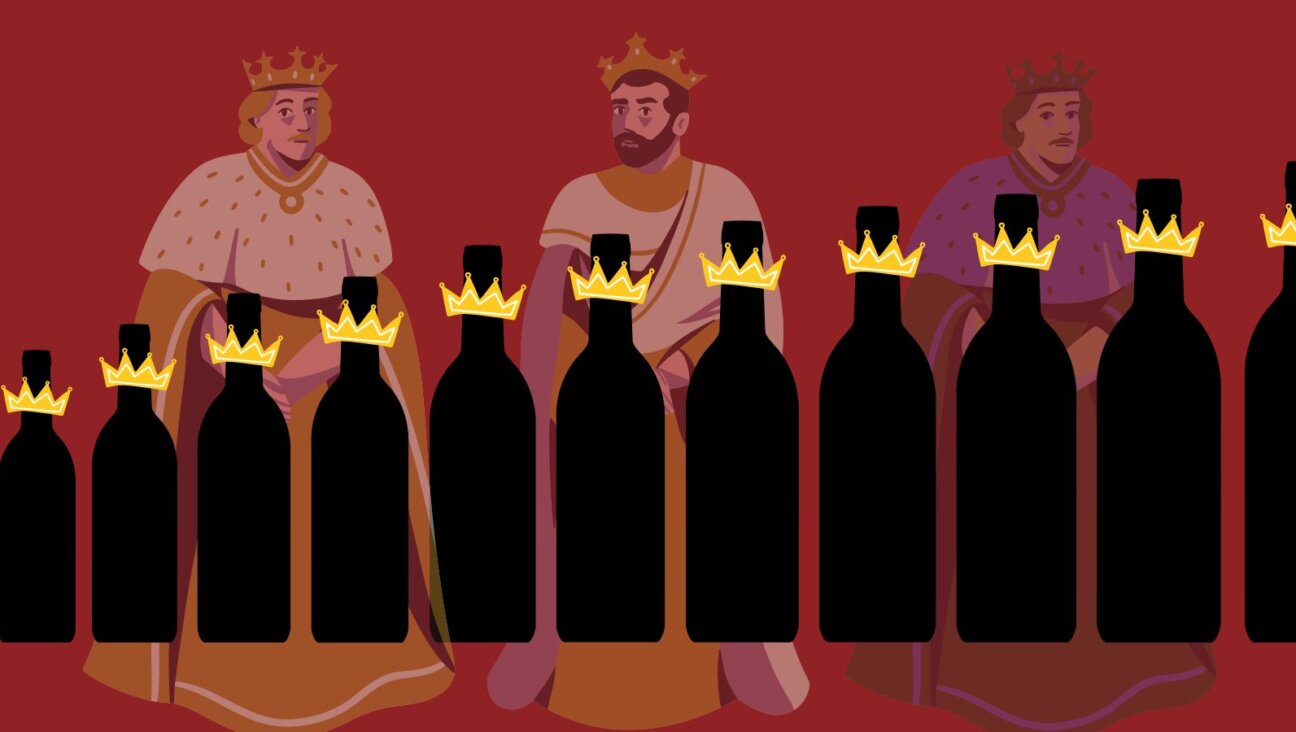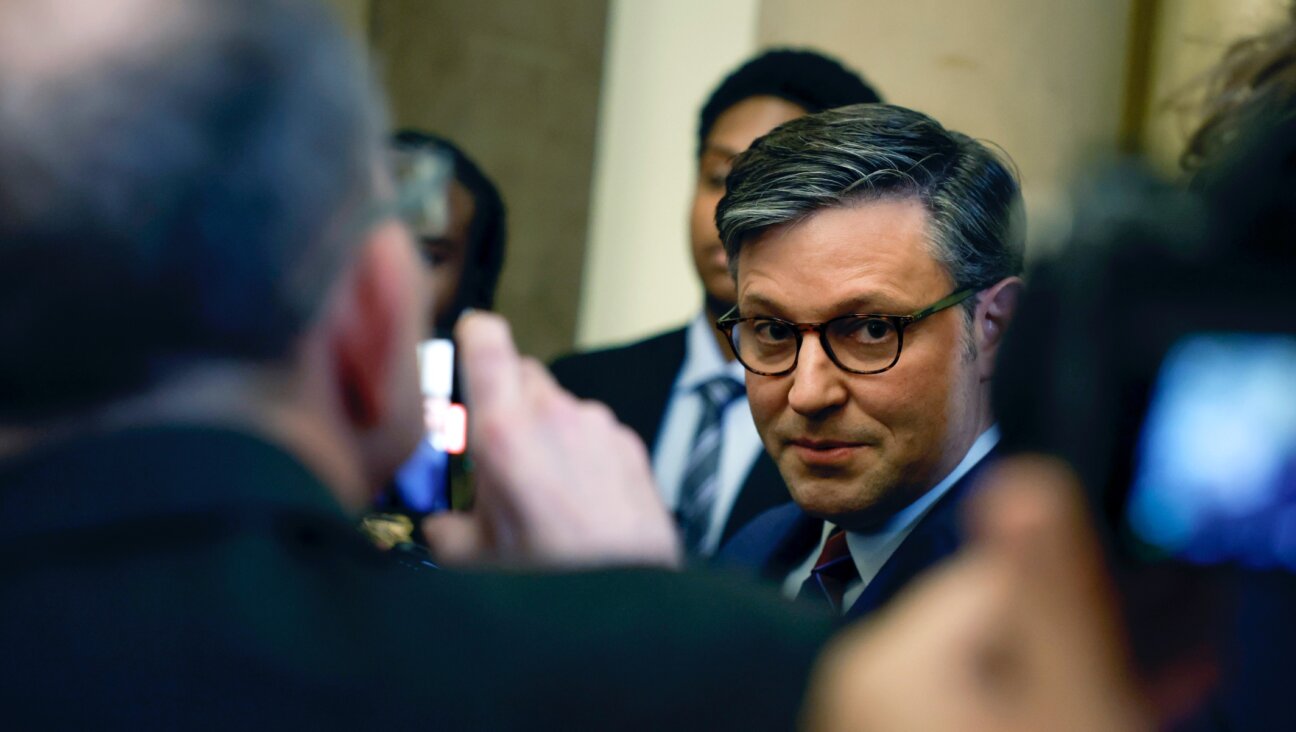Discovering Kafka and Rabbi Nachman
Arts and culture editor Dan Friedman interviewed award-winning poet and author Rodger Kamenetz, whose new book about his physical and spiritual pilgrimage, “Burnt Books: Rabbi Nachman of Bratslav and Franz Kafka” (Schocken/Nextbook), charts a path between literature and religion. The Arty Semite is now featuring excerpts and reviews from Kamenetz’s Psalm 151 series.
Dan Friedman. This book is very much a journey for you. It seemed to me, just reading the book, that you went in more a disciple of Kafka and came out more of a disciple of — I mean that in a very loose and “multi-quoted” way — a disciple of Rabbi Nachman.
Rodger Kamenetz. “Multi-quoted” in the sense that we don’t want anyone to think that I’m Orthodox or a member of a particular Hasidic group. I just want to make sure that’s clear. Yes, I think that’s an interesting way to put it, Dan. I would say, look, I think we’re all disciples of Kafka.… The Kafka-esque has become a cliché in that we’ve so completely absorbed his sensibility that we’ve taken it into ourselves. So I think we all start out as Hasidim of Kafka. To bring Kafka to Nachman — to bring the Kafka in myself to Nachman — was the project, and for me, Nachman was the great discovery. Because to go more deeply into his life, and to contemplate what it means to be Haredi and what it means to live a life in which every gesture and every word is deemed significant, not only by yourself but by those around you, it’s a powerful contemplation for me, because I think such figures are really rare.
Why Kafka and Nachman of Bratslav?
R.K. I was struck by two things. One, I was teaching a course on literature and Jewish mysticism at Louisiana State, and I was interested in the idea of considering mystical literature as literature. So “The Zohar” is once described as a romancero, a Spanish picaresque novel with rabbis roaming through the landscape. What happens if you start tracing a line through Jewish mystical literature, and you come to Rabbi Nachman, who’s actually in a certain way a literary figure — the inventor of the Yiddish tale (even though these tales are infused with Jewish mysticism)? Then you cross over the secular line; the next writer up in Kafka, who is clearly a literary writer but whose stories are full of theological content, as Gershom Scholem would say. And in fact, as Scholem indicates, if you want to understand Kabbalah in our time, you’d have to read Rabbi — You’d have to read Franz Kafka.
D.F. What does he mean by having to read Kafka?
R.K. I try to explore that theme throughout the book, because it’s not an obvious statement on his part. If Kafka was a kabbalist, he was the first who didn’t fully master Hebrew; [he] had no particular Jewish practice. So externally, it’s difficult to understand the statement. I think what he really means is Kafka was haunted by the absence of God — and haunted by the feeling of being judged. This emotional state, I think, replicates the feeling-state of the medieval kabbalist.
D.F. Talk a little bit more about how Kafka and Nachman of Bratslav embody modernity and the medieval life-state.
R.K. Clearly, Kafka is the major modernist writer of the 20th century — the most emblematic in terms of themes of alienation, of absurdity, of the huge bureaucratic systems that make no sense, of the individual caught in these things. So I think Kafka clearly speaks to that. As far as the medieval, I really feel that Kafka was an individual who was haunted by the sense of being judged by an invisible tribunal. It’s almost like every day for him was Yom Kippur.
You pointed out that “The Judgment” was written the day after Yom Kippur, which I never realized.
R.K. Correct, and it was the first time that he had not gone to synagogue with his father, so it had that guilty feeling of, “Oh my God, I didn’t go to shul this year, even on Yom Kippur.”
You say that one of the problems that Kafka saw with his own writing was that he was a bit worried it was poisoned?
R.K. Yes. Well that’s an interesting question. The conversation with a young writer named Gustav Janouch, where Janouch presented Kafka with [Kafka’s] stories in leather and gold letters on them. Kafka is so dismayed, and basically says, ‘You mistake me. I’m not the fire, I’m not the burning bush. I’m only the thorns.’ His sense that: What is the use of creating stories if the stories actually harm people and discourage them? Maybe he understood that he would be interpreted — as he often is — as a pure nihilist. Whole schools of readers view Kafka as the prince of nihilism, and of despair.
Is that not how you read him?
R.K. No, not at all. I think I read him as someone who is a spiritual seeker, as someone who feels the absence of God — or who feels the pain of the absence of God — which is, to me, really the most important first step to having a spiritual life. If you don’t feel that longing and that absence, you’ll never see the gleam of light. And I think for a lot of people, they’re very happy not to enter into that search. I don’t see him as a pure nihilist. Neither did Scholem or Max Brod, who probably knew him better than anyone.
And I suppose that Scholem, if not Kafka, saw that absence of God in kabbalistic terms?
R.K. Right. He spoke of the borderline between nihilism and mystical nothingness, which is a kind of fine distinction for most of us, I suppose. But I understand that to mean that (even atheism is a religious position, in a certain way) — that if you don’t ever feel the absence of God, then you really can’t begin to look for the presence of God. I don’t want to get simplistic; [these are] pretty weighty matters.
But to go back to your question. The medieval piece for Kafka is this haunted sensibility, this sense of the demonic. Kafka felt obsessed with the demonic, which is part of what went into his statement to Janouch — that maybe his work was the work of the devil. This is certainly not a thing for a modern writer to say. So I think Kafka really ventured into this stability and these realms that were quite familiar to medieval Jews, where demons are real, where the divine is real, where judgment is real. We’d like to live in a world where none of those things are real.
Nachman of Bratslav, he was living more clearly in modernity.
R.K. Nachman was a man who saw modernity coming, and in his own way was quite prophetic about it. You might say he was doing outreach in an extraordinary way. I would have trouble getting 15 people to come to my house even if I provided entertainment, and he’s getting 15,000 people to come every year to his grave, so there’s some kind of pull there. That’s pretty extraordinary.
His storytelling, in particular, is clearly designed to reach out to people who otherwise would not be interested in Jewish mysticism or in serious religious Judaism. I think what’s most modern about Rabbi Nachman is his consideration of the problem of extreme doubt and extreme nothingness — of descending into states of mind where he felt that he knew nothing, which he frequently proclaimed to his followers…. To dramatize and live out the reality of doubt is an extraordinary feat for a figure like Rabbi Nachman, who clearly was deeply devout and deeply religious.
We are not privy to possibly any of Kafka and Nachman’s most important works, and therefore we can project on them what we would like to see. Isn’t that some part of what we like about them? … It’s the hidden-ness of these two that makes them probably cultic.
R.K. I’m inclined to agree with you to some extent, but I’d have to correct it just slightly. First of all, Rabbi Nachman did leave behind extensive commentaries… and they’re now being put out in English and numerous volumes by BRI, Bratslav Research Institute, so they’re available to anyone who wants to study his Torah. And he was very careful to make sure that happened. He also directly asked that his story be put out in dual versions, in Yiddish and Hebrew, so I think in Rabbi Nachman’s case, it’s true that certain works were burnt, and the mystique of that is very important — the notion of the burnt book, obviously. I think you’re right: that creates a kind of fascination and wonder. What did he withhold from us?
With Kafka, I think he left enough behind for us to understand what his project was. But again, the notion that he burned so much of his work certainly adds a mystique. What I argue is that in a certain way, a reader is a kind of Hasid of the author…. The first Hasidim of these two writers were Rabbi Nathan, who essentially shapes the publication of it 30 years after Rabbi Nachman’s death, and Max Brod, who does the same exact thing for Franz Kafka. So I’m fascinated by this idea that the reader’s devotion, in a certain way, does create the writer. And that it’s a religious devotion. Whether the writer is secular or religious, the devotion of the reader to the book is a mystical devotion.
We talk about a body of the future. Kafka, I think, says, “I am literature.” And I think that Nachman also said something very similar — the distinction between the physical body and the written word. That distinction is not drawn as clearly as a rationalist, perhaps as you did when you were writing your columns for the Forward.
R.K. What Nachman said at that point was, “What am I but the holy teachings my soul pours forth?” Which is a really a very beautiful thing to say. … At the very moment when the physical book is disappearing (or so some people claim), the materialistic attitude toward “the book,” or towards literature, is more in charge than ever. I think these two writers stand very much. And I think maybe one slightly elegiac purpose in writing a book at this moment, writing a book called “Burnt Books” in the age of the e-book, is to look at — well wait a minute, maybe the book is not the physical object; in fact, it’s what the soul puts forth and it needs to be understood in that way.

I hope you appreciated this article. Before you go, I’d like to ask you to please support the Forward’s award-winning journalism this Passover.
In this age of misinformation, our work is needed like never before. We report on the news that matters most to American Jews, driven by truth, not ideology.
At a time when newsrooms are closing or cutting back, the Forward has removed its paywall. That means for the first time in our 126-year history, Forward journalism is free to everyone, everywhere. With an ongoing war, rising antisemitism, and a flood of disinformation that may affect the upcoming election, we believe that free and open access to Jewish journalism is imperative.
Readers like you make it all possible. Right now, we’re in the middle of our Passover Pledge Drive and we need 500 people to step up and make a gift to sustain our trustworthy, independent journalism.
Make a gift of any size and become a Forward member today. You’ll support our mission to tell the American Jewish story fully and fairly.
— Rachel Fishman Feddersen, Publisher and CEO
Join our mission to tell the Jewish story fully and fairly.
Our Goal: 500 gifts during our Passover Pledge Drive!

























